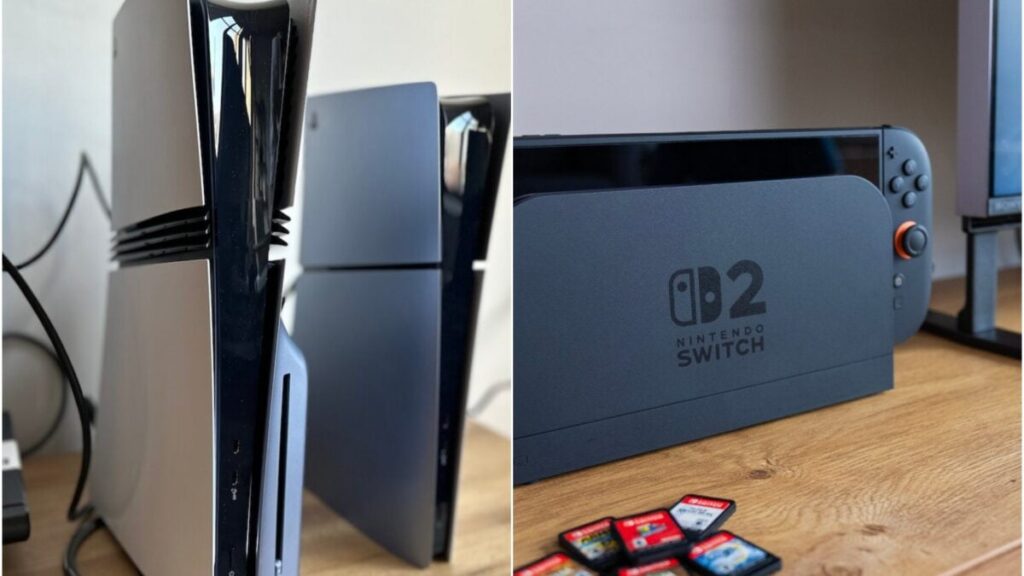There’s something so intoxicatingly convenient about a game handheld. Despite the fact the Nintendo Switch 2’s design hasn’t changed from its 8-year-old prequel, it’s still the epitome of gaming thanks to the dock that connects it to your TV. Sony’s PlayStation brand seems to be hedging on the same bet Nintendo made nearly a decade ago. The latest rumors and leaks suggest Sony’s rumored PlayStation 6 handheld could also dock with a TV and offer even better performance than both the Switch 2 and the upcoming Asus ROG Xbox Ally handheld.
Gaming hardware leaker Moore’s Law is Dead spilled the beans on what could be Sony’s PS6. The big update is that Sony may let users hook up the supposed handheld to a dock connected to their TV. This could unlock even better performance than the device in handheld mode. The dock itself may not provide more processing power, but like the Switch 2, the peripheral would allow additional power and thermal management to unlock better performance. The PS6 handheld may stick to 1080p resolution on a small display, but on a TV it could have performance beyond a PS5, according to the YouTuber.
The leaker has a relatively consistent track record, especially regarding the early pricing and specs of the PlayStation 5 before it launched in 2020. With the upcoming PlayStation 6 and long-rumored PlayStation handheld, Sony seems to be taking its design cues from multiple sources. The people behind the PlayStation brand may even create a lower-end, cheaper console again to the Xbox Series S.
Even so, we still would have to wait another two years to see any of these devices in action. At least, the PS6 generation seems like it will offer a smorgasbord of consoles for consumers. Which is all more exciting since the next generation could have much better graphics capabilities than either the Xbox Series X or PS5. According to Moore’s Law is Dead, the handheld, dubbed “Canis” internally, will use a custom AMD APU, or accelerated processing unit. This kind of chip design has both CPU and GPU capabilities. The PS6 design will reportedly use AMD’s anticipated Zen 6 CPU and RDNA 5 GPU microarchitecture.
PS6 to have more power than PS5
The PlayStation 6 handheld may use a small 3nm chip with four Zen 6C cores and two extra low-power cores to handle the PlayStation’s base software. The chip may house a GPU with 16 RDNA 5 compute units (CU). AMD’s compute units are core clusters designed to handle the complex rendering tasks for graphics applications. RDNA 5 is supposedly 5% to 10% faster than RDNA 4 currently is. Even with its limited number of CUs, RDNA 5 could still be powerful enough to handle games from the PS5 era. The PS5 is running on AMD’s older Zen 2 and RDNA 2 microarchitecture. Moore’s Law is Dead suggests the PS6’s CUs will be “60%” faster per unit than RDNA 2.
The saving grace for the PS6 handheld may not even be the explicit power of the device itself. AMD’s AI upscaling tech received a massive boost this year with the introduction of FidelityFX Super Resolution 4. This is hardware-specific upscaling that takes frames rendered at a lower resolution and pushes them to look better at higher resolutions, all while keeping the better performance. Past FSR 3 and 3.5 were more hardware agnostic. The new version results in cleaner visuals and fewer artifacts created by upscaling, and it’s nearly on par with Nvidia’s DLSS 4.
The leaks seem to come from AMD, and we still don’t have any specifics on the PlayStation 6 handheld’s clock speeds or any other details that could help define what kind of power it’s capable of. Previous leaks for the PlayStation 6, dubbed internally as “Orion,” also suggest the next console could be a big improvement over the PS5 and even the PlayStation 5 Pro.
The $450 Switch 2 has access to older versions of DLSS, and we’ve already seen how much of an impact that can have in games like Cyberpunk 2077, which runs even better in most scenarios than the same game on the $550 Steam Deck. The next-gen PlayStation will only be successful if it can meet or beat prices on competing hardware. Moore’s Law is Dead suggests that the lower-end console would cost less than a Switch 2, and the Canis handheld may also offer better value than Nintendo’s latest system. The higher-end Orion device would still demand more from your wallet. Considering the current success of the Switch 2, reportedly selling 2 million units in the U.S. since launch, according to Circana analyst Mat Piscatella, a PlayStation 6 handheld could prove more popular than any standard console occupying precious space on your TV stand.

